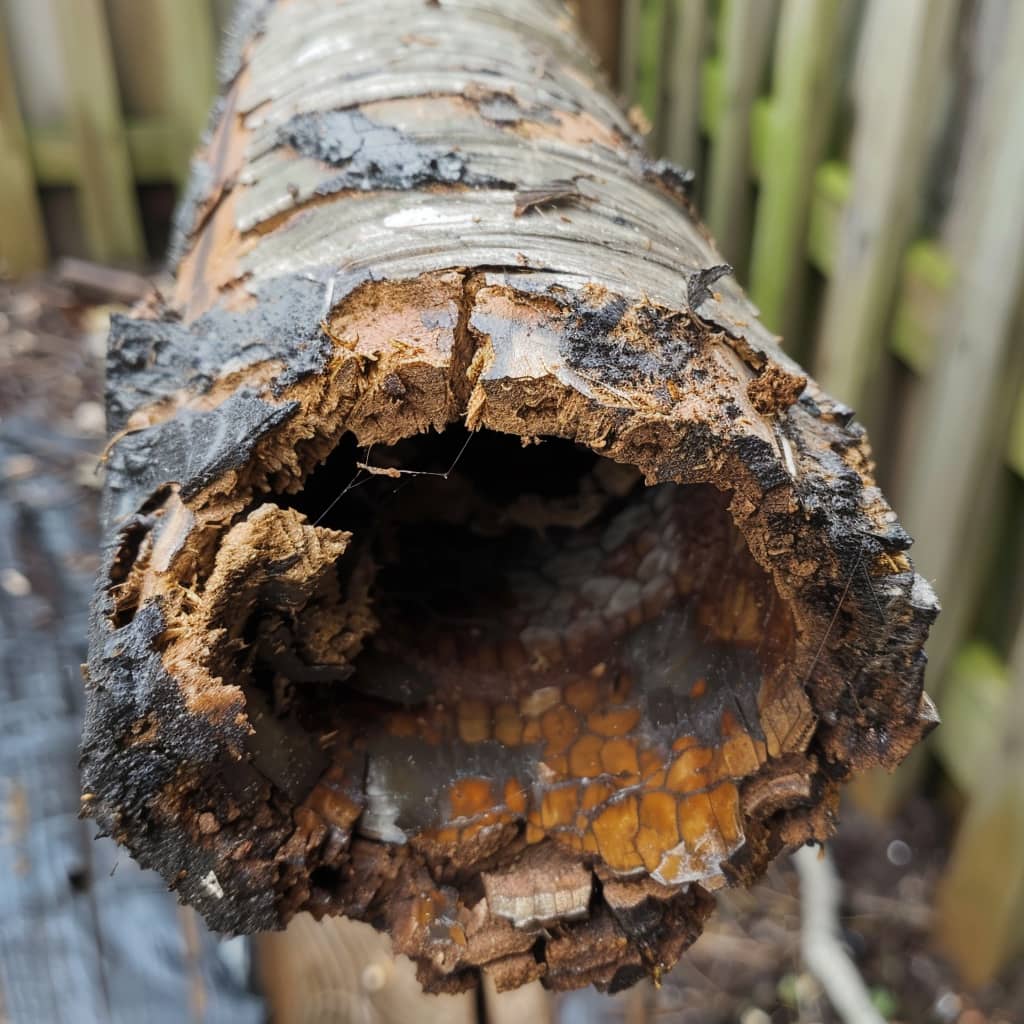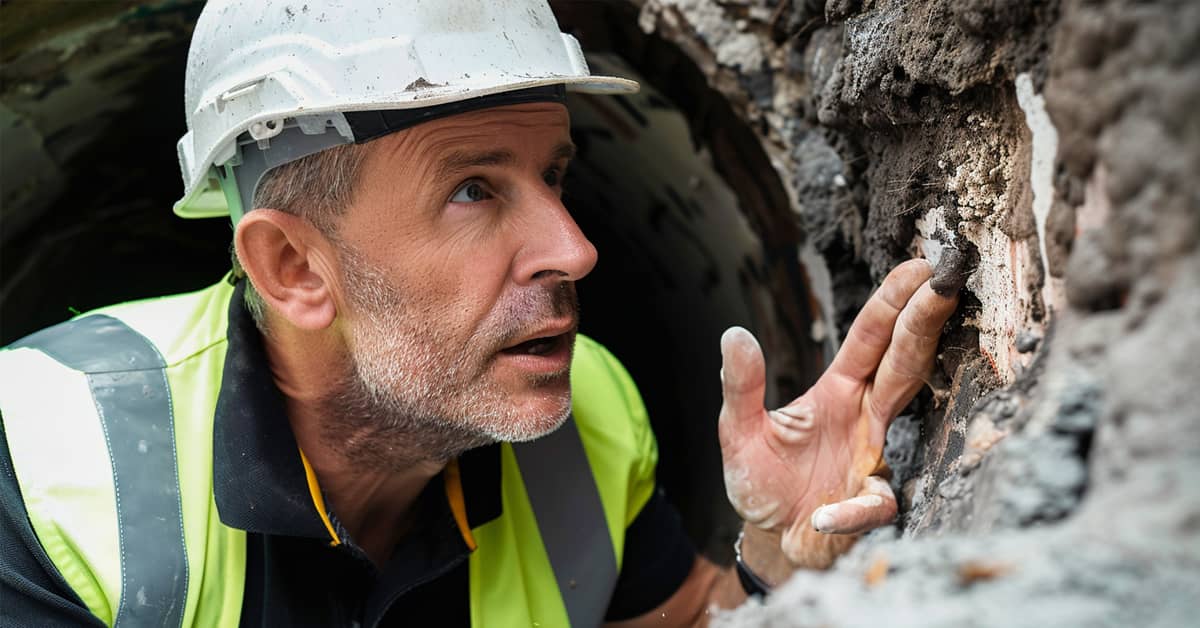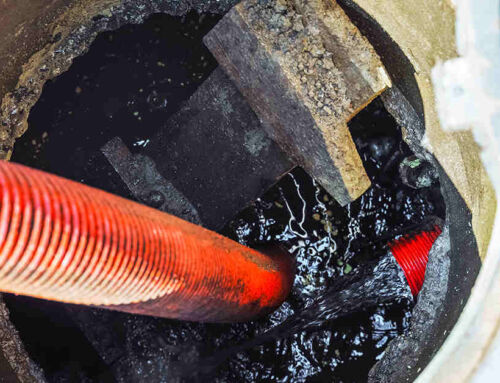Jump to…
Experience the Unblockers Difference
No call-out charges
Emergency response call-outs available
Available anytime 24/7
Expert, local engineers
Fixed price, no hidden charges

Pitch fibre pipes, widely used from the 1950s to the 1970s, present several issues today, including deformation, root ingress, and collapses. This comprehensive guide explores the causes, signs, consequences, and solutions for problems associated with pitch fibre pipes, helping homeowners understand and address these challenges effectively.
What are Pitch Fibre Pipes?
Pitch fibre pipes are drainage pipes composed of wood cellulose impregnated with coal tar. They were used extensively from the 1950s to the 1970s for their affordability and light weight. Over time, however, their structural integrity can deteriorate, leading to serious issues.
Historical Use and Decline
While initially hailed as a cost-effective solution, pitch fibre pipes have shown long-term weaknesses. As a result, many properties now face the consequences of using this outdated material, leading to frequent repairs and replacements.
Common Problems with Pitch Fibre Pipes
Deformation and Collapse
One of the primary issues with pitch fibre pipes is their tendency to deform and collapse. Exposure to water, chemicals, and pressure causes the pipes to lose their shape, leading to blockages and reduced flow capacity.
Causes of Deformation
Water Exposure: Continuous contact with water softens the pipe material.
Chemical Reaction: Interaction with household chemicals weakens the pipe structure.
Physical Pressure: External pressures from soil movement or traffic can cause pipes to cave in.
Root Ingress
Tree roots are naturally attracted to the moisture inside pipes. Pitch fibre pipes are particularly vulnerable to root ingress, where roots penetrate and eventually block or break the pipes.
Impact of Root Ingress
Blockages: Roots obstruct the flow of water, causing backups.
Structural Damage: Persistent root growth can crack and break the pipes, leading to leaks.
Blockages and Overflows
As pitch fibre pipes deform and roots infiltrate, blockages become more frequent. This leads to overflows, which can cause significant property damage and health hazards.
Consequences of Blockages
Health Risks: Overflowing sewage poses serious health risks due to contamination.
Property Damage: Water damage from overflows can ruin foundations, landscaping, and interiors.
Signs of Pitch Fibre Pipe Problems
Slow Draining Water
One of the most common signs is slow draining water in sinks, bathtubs, or toilets. This occurs because the collapsed or deformed section of the pipe obstructs normal water flow.
Unpleasant Odors
Foul odors emanating from drains or around your property can indicate sewage buildup due to blockages or leaks in pitch fibre pipes.
Damp and Waterlogged Areas
Water escaping from damaged pipes can saturate the surrounding soil, leading to damp patches or waterlogged areas in your garden or lawn. Indoors, you may notice damp walls or floors.
Sinkholes and Cracks
Severe cases of collapsed pipes can cause the ground above to sink, forming sinkholes. You might also see cracks in walls, driveways, or pavements, indicating underlying drainage issues.
Rodent Infestations
Damaged pipes can create entry points for rodents. An increase in rodent activity around your property might be due to a collapsed drain providing easy access.

How Professionals Fix Pitch Fibre Pipes
CCTV Drain Surveys
To accurately diagnose the extent of the damage, professionals use CCTV cameras to inspect the interior of the drainage system. This non-invasive method provides a clear view of any deformations, blockages, or root ingress.
Pipe Relining
For minor collapses or deformations, pipe relining is a less invasive solution. A resin-soaked liner is inserted into the damaged pipe and then inflated, forming a new, durable pipe within the old one.
Pipe Bursting
This technique involves breaking the old, damaged pipe while simultaneously pulling a new pipe into place. It’s more efficient than traditional excavation but might not be suitable for all situations.
Excavation and Replacement
In severe cases, excavation might be necessary to replace the damaged sections of the pipes. While disruptive, this method ensures that the drainage system is fully restored.
Preventive Measures
Regular Inspections
Scheduling regular inspections with a professional can help identify and address minor issues before they escalate into major problems. These inspections can detect early signs of wear, blockages, and potential collapses.
Proper Waste Disposal
Avoid disposing of grease, non-degradable items, and harsh chemicals down the drain. These substances can accelerate the deterioration of pitch fibre pipes.
Root Barrier Installation
If you have trees near your drainage system, consider installing root barriers to prevent roots from infiltrating and damaging the pipes.
Ground Stability Management
Ensure the ground around your property remains stable, particularly if you live in an area prone to heavy rainfall or ground movement. Proper drainage and landscaping can help maintain soil stability and protect your pipes.

Conclusion
Understanding the issues caused by pitch fibre pipes and taking proactive steps to address them is crucial for maintaining a functional and safe drainage system. Regular maintenance, professional inspections, and mindful practices can help prevent costly repairs and ensure the longevity of your property’s plumbing infrastructure.
FAQs
1.0 What are the signs of pitch fibre pipe problems?
Signs include slow draining water, unpleasant odors, damp and waterlogged areas, sinkholes, cracks, and increased rodent activity.
2.0 How do professionals fix pitch fibre pipes?
Methods include CCTV drain surveys, pipe relining, pipe bursting, and excavation and replacement, depending on the extent of the damage.
3.0 Can pitch fibre pipes be repaired without excavation?
Yes, less invasive techniques like pipe relining and pipe bursting can often fix the damage without extensive digging.
4.0 How can I prevent issues with pitch fibre pipes?
Regular inspections, proper waste disposal, installing root barriers, and managing ground stability are key preventive measures.
5.0 Are pitch fibre pipes still used today?
No, due to their known issues, pitch fibre pipes are no longer used in modern plumbing installations. However, many older properties still have these pipes in place.
Related Articles
READY TO MAKE YOUR ENQUIRY?
Get a quote for a drainage callout
Get a quote for a drainage callout
We have drainage engineers in your area now offering availability today.
Just leave a few details and our friendly drainage service team will call you right back.
We have drainage engineers in your area now offering availability today.
Just leave a few details and our friendly drainage service team will call you right back.
"*" indicates required fields

Need to speak to us right away? We have local engineers available now. Call 0808 303 0050
“Outstanding Service & Fast Repair”





